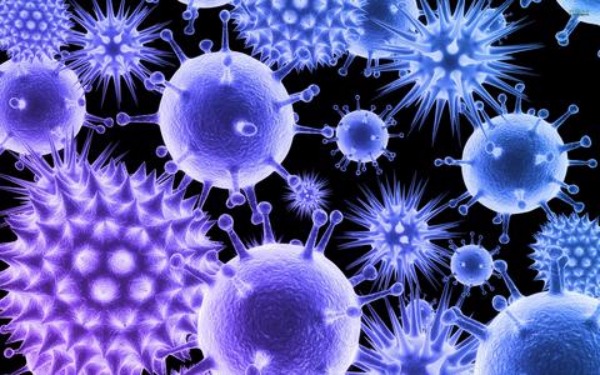
Did you know that not all viruses are harmful? In fact, many are necessary for our health! We’ve heard a lot in recent years about the importance of a healthy microbiome. I’ve lectured and written many times about the impact that the balance of bacteria in the gut microbiome has on our health. Research has shown the positive influences of good bacteria in the gut on the cardiovascular, immune, neurological, gastrointestinal, and metabolic systems as well as the development in utero and early life. Much of the talk about the microbiome focuses on the bacteria that line the digestive tract but today we’re going to explore a fascinating subset of the microbiome- the virome. The study of viruses and how they impact our health is vital for understanding our own viromes. Let’s delve deeper!
What is the Virome?
Viruses are actually the most abundant biological entity on earth. The number of viruses is staggering and there is much we still don’t know about the virome. While we are still exploring the role of the virome in health, there are some valuable tools that we can take away today to improve our health and the health of our children. When we talk about viruses, we are talking about a few different things. First, there are what we commonly think of as viruses, the RNA and DNA classified viruses that infect our cells and cause the viral symptoms we are familiar with. With common symptoms of a runny nose or cough from an upper respiratory virus or the digestive upset from a stomach virus, these viruses are familiar to all of us. Then there are the more obscure viruses like the viral elements that are embedded in our own DNA and the bacteriophages that infect the bacteria in our microbiome. (1) Recent research into the virome illustrates why these different classes of viruses are important to our overall health.
How Viruses Make Us Healthy

We are starting to realize the importance that bacteriophages play in our immune systems. Bacteriophages are viruses that infect and kill the bacteria in our individual microbiomes. They do not infect us, but do a wonderful job fighting the bacterial infections that plague us. Each bacteriophage is specific to a certain bacteria, making them a precise antibiotic agent without any of the myriad of side effects that modern day antibiotics cause. (2) Bacteriophage therapy is common in Eastern Europe and is just starting to be used with success in the US. I’ve seen success with some patients using bacteriophages to balance the microbiome in IBD or inflammatory bowel disease like Crohn’s or colitis. Research has consistently shown that bacteriophages play a role in the regulation of the gut microbiome and IBD is characterized as having deranged gut microbiomes. (3) This is an exciting new approach to balancing the microbiome in a time when antibiotic resistance and inflammatory bowel disease continue to rise.
Bacteriophages are not the only virus to help balance the gut microbiome and positively influence our health. In one 2014 study mice were infected with a certain strain of the norovirus after completing a course of antibiotics. (4) Amazingly, the norovirus helped to rebalance the gut microbiome, both the viral and bacterial components of the biome. This balancing influence has never been observed with viruses and it is an exciting discovery. This has been replicated in other studies that show the same balancing of the microbiome by adding a virus to the gut of mice. (5) Recent research has also shown that viruses present in saliva can target harmful bacteria, acting as a line of defense in the immune system. (6) The research is absolutely showing that viruses can have a positive impact on our health.
So How Can We Keep Our Virome Healthy?
Diversity in exposure to microbes is really the key to a healthy virome. Diversity in diet is a cornerstone of maintaining a beneficial virome. (7) We want to eat a large variety of food to get the fiber and phytonutrients needed to maintain the balance of the virome. If you look at traditional diets and look at a food category like tubers, for example, you see these diets included as many as 120 different kinds of tubers. This type of variety is important and while the tuber section at the farm stand or grocery store might not have 120 varieties, we can always find a variety of whole foods to introduce in our diet. Diversity in our environment is also important for exposing yourself to a diversity of microbes that keeps the microbiome well. We need to be getting outside daily as nature is the ultimate source of microbes for a healthy virome. Even opening the windows in your house and getting houseplants in every room can help support a balanced virome.
Dr. Lim from Washington University School of Medicine has done some interesting research with infant twins showing that the development of the infant virome parallels the development of the bacterial microbiome in the gut. (8) This research coupled with the recent studies showing that early introduction of allergenic food and exposure to microbes lowers asthma and allergies can all be seen as another argument for diversity in exposure, especially in early life.
Avoiding things that derange a healthy virome is also an important step in maintaining health. Medications like antibiotics and proton pump inhibitors used to treat excess stomach acid in GERD (PPIs) negatively impact the balance of the virome. Avoiding processed foods and overly sanitized environments is also very important for maintaining wellness. (9) Avoiding these things that disrupt the gut ecology will positively impact the balance of microbes in the digestive tract. We still have a lot to learn about the virome and the microbiome in general, but recent research promises exciting new avenues in medicine and real tools we can use today to improve our health.
– Dr. Catherine Clinton
1. http://www.dldjournalonline.com/article/S1590-8658(15)00414-4/fulltext
2. https://www.ncbi.nlm.nih.gov/pmc/articles/PMC3916379/
3. https://www.ncbi.nlm.nih.gov/pmc/articles/PMC4616208/
4. http://jvi.asm.org/content/89/4/1951.full
5. https://www.ncbi.nlm.nih.gov/pmc/articles/PMC4578625/
6. https://www.ncbi.nlm.nih.gov/pmc/articles/PMC3329113/
7. https://www.ncbi.nlm.nih.gov/pubmed/21880779
8. https://www.ncbi.nlm.nih.gov/pmc/articles/PMC4710368/
9. https://www.ncbi.nlm.nih.gov/pmc/articles/PMC4550281/
